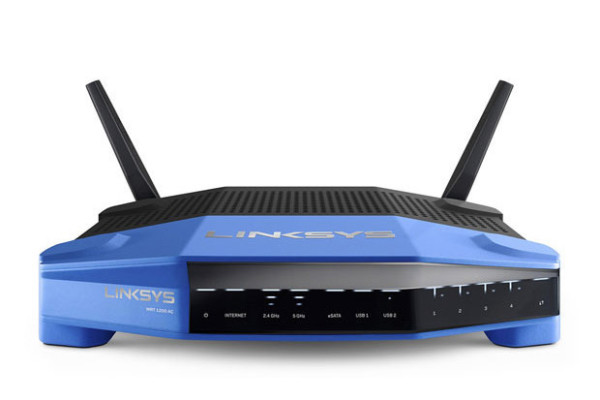 Sometimes, less is truly more. When it comes to the Linksys WRT1200AC, the little brother to the WRT1900AC router introduced last year, it might be best to say less is just enough.
Sometimes, less is truly more. When it comes to the Linksys WRT1200AC, the little brother to the WRT1900AC router introduced last year, it might be best to say less is just enough.
The 1200AC is a slimmed-down version of the 1900AC, with two fewer antennas and around $100 knocked off the list price. Despite these reductions, it’s no less versatile or powerful. All of the good aspects of the 1900AC — the expandable hardware, the feature-packed firmware, the convenient setup process — are still here.
Hardware hackers may be happiest of all with the 1200AC. Not only is the router compatible with open source firmware, that compatibility is available right out of the box — without the many months of waiting for a proper open source chip set driver that gave Linksys a black eye when the 1900AC debuted.
Though the 1200AC has only two antennas versus the 1900AC’s four, the wireless signal strength on the 1200AC was about as good as that of its bigger brother. Said antennas, again as with the 1900AC, are removable and can be upgraded if needed — for example, with directional antennas.
I’m less fond of another change: The corded power brick on the 1900AC has been replaced by a wall-wart plug on the 1200AC. Be warned, the wart is slightly too large to use on a wall socket without blocking both outlets; I ended up plugging it into a power strip.
The 1200AC uses the same Smart Wi-Fi-branded firmware as the 1900AC, so setting up and configuring the router for use was about as painless as could be. Plug in, wire up, turn on, and navigate to linksyssmartwifi.com. The few options that need to be configured out of the box such as the wireless network name are all provided through a wizard interface.
No further tinkering was needed to replace my existing router with the 1200AC; by providing the same wireless network name and password used before, all my devices connected without issue. For Wireless Protected Setup (WPS), there’s a small button on the back of the unit — small enough that I missed it the first time I looked, so be sure you find it ahead of time if you use WPS.
Tests with the iPerf network performance test tool, between two systems with wired 1GB Ethernet adapters, showed that the 1200AC provides no less throughput than the 1900AC did (at least in wired mode). Even more surprising was that the 1200AC’s wireless was as good as its bigger brother’s, despite having fewer antennas. Signal strength on both 2.4GHz and 5GHz networks are more or less the same as those put out by the 1900AC.
The rest of the hardware in the 1200AC is identical to its predecessor: four gigabit Ethernet ports, a USB 2/3 port, and a SATA port. Connect a storage device to the USB or SATA ports, and you can share the contents via a password-controlled folder access, FTP services, or a DLNA-compatible media server. The Web interface for file sharing (by way of the Twonky server) isn’t terribly polished, but it gets the job done.
One of the original selling points of the 1900AC, and now the 1200AC, was that it could accept open firmware such as OpenWRT. Unfortunately, the 1900AC couldn’t do that when first released, due to the lack of a proper open source driver for the Marvell 88W8864 chip set in the router. The required driver finally came out last December. It was revised early in April 2015 to fix several problems, and now the 1200AC and 1900AC alike have OpenWRT images available. Flashing the router with OpenWRT was easy enough, although you’ll want to download and keep handy a copy of the original Linksys firmware in case you find OpenWRT’s array of options too dizzying.
When the 1900AC debuted, Linksys touted (among other features) the apps available for managing the router — that is, a way for parents to enforce website restrictions. The same apps are available for the 1200AC. I liked the app that remotely configures the router from a smartphone, but no new apps have been added since the 1900AC’s release, so this seems unlikely to be a major selling point. The 1200AC by itself is more than appealing enough.





